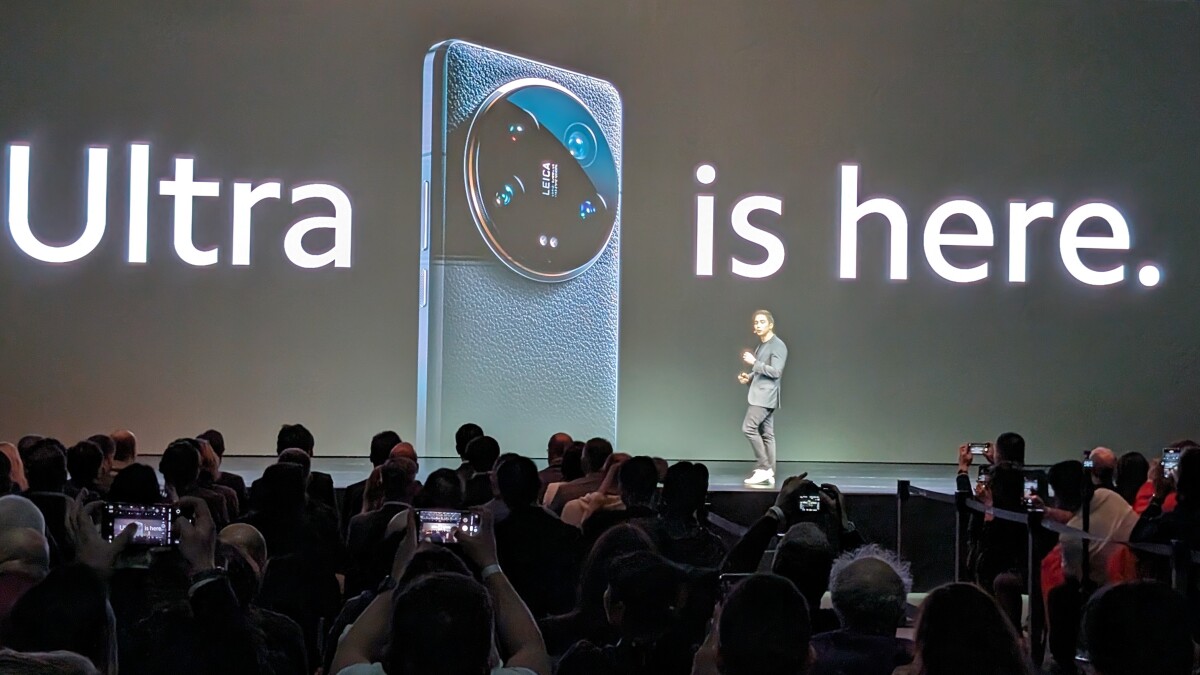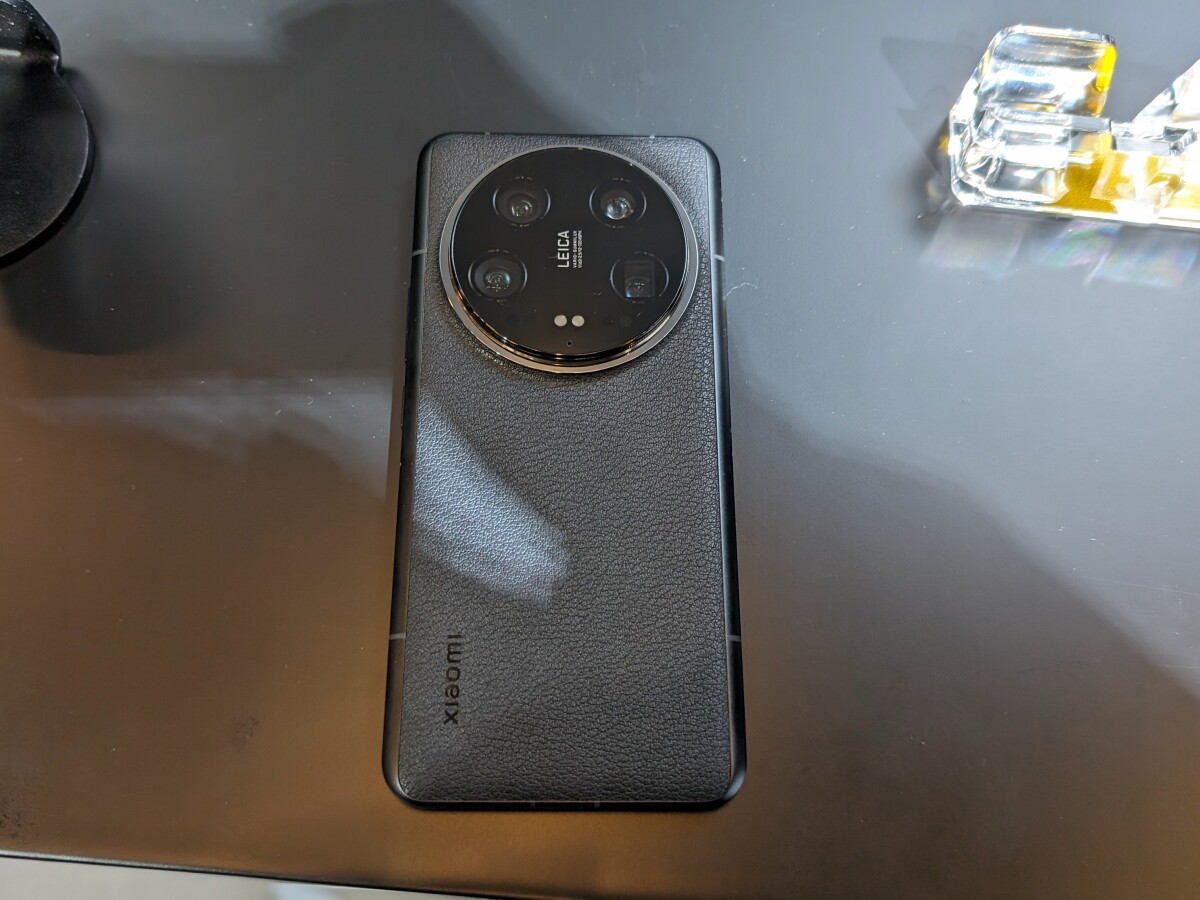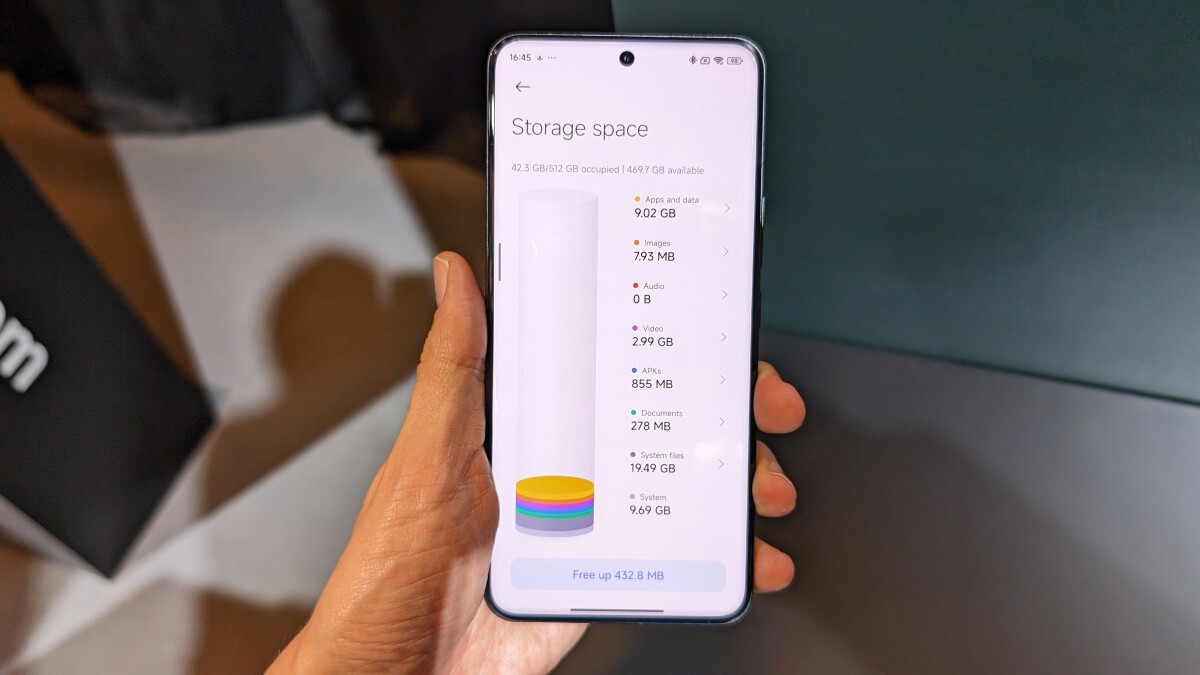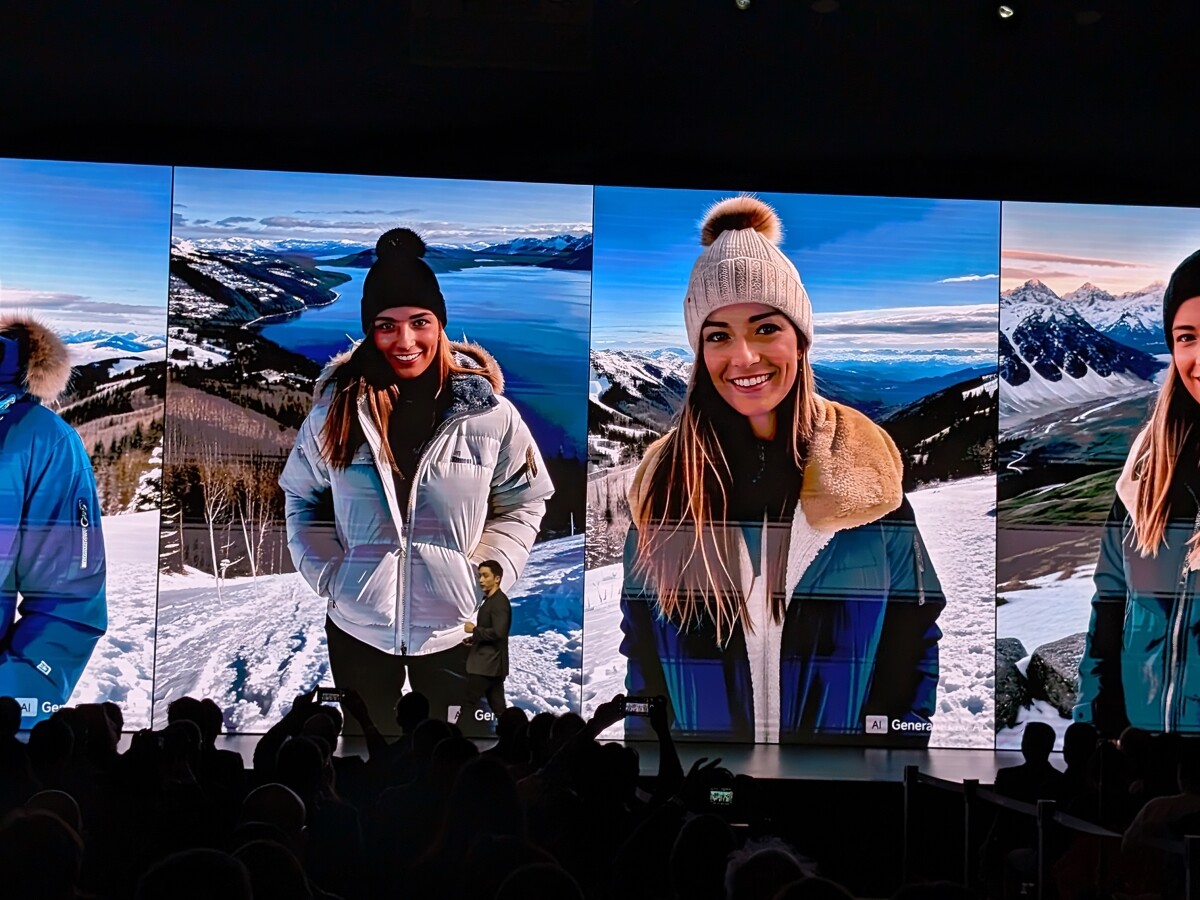The Xiaomi 14 Ultra once again comes with an impressive camera setup that was created in cooperation with Leica. The short test also shows that Xiaomi has thrown off ballast.

Xiaomi is showing its new top smartphone at MWC with the Xiaomi 14 Ultra. (Source: Netzwelt)
Just a few days after the presentation in China, Xiaomi also announced the international market launch of the new top smartphone Xiaomi 14 Ultra at the MWC in Barcelona. A novelty. It usually takes several months between the start of sales in China and overseas. We are therefore very pleased to be able to hold the device in our hands.
Looks good, feels even better
Infrared sensor and MIUI are missing
AI only plays a minor role
New Leica camera
Netzwelt means
We liked that
We didn’t like that
The first contact is extremely positive. The Xiaomi 14 Ultra just feels good, much better than its predecessor. There are several reasons for this. This is how the smartphone has slimmed down. Instead of 227 grams, it only weighs 219 grams – at least in the version with an artificial leather back that is released in this country. In China, the device is also available in other versions that are slightly heavier.
Looks good, feels even better
Furthermore, the screen of the Xiaomi 14 Ultra is still curved towards the edges, but not as much as before. In our opinion, this means the device rests more securely in the hand. If you do slip up, it shouldn’t be a big deal, according to Xiaomi. The aluminum frame of the 14 Ultra was further reinforced and milled from a block for this purpose. The self-developed Shield Glass is also said to be ten times more robust in the event of falls than the previous generation. We didn’t test this in the short time we were able to try out the phone as part of the launch event at MWC.

Looks and feels chic: the Xiaomi 14 Ultra. (Source: Netzwelt)
When you look at the cell phone from all sides, you notice that Xiaomi has done without the infrared sensor of its predecessor, which you can use to control televisions and other devices. The reason for this is unknown. You also have to do without the familiar MIUI interface. The Xiaomi 14 Ultra runs HyperOS. This is the name of the new Xiaomi operating system. However, HyperOS is still based on Android. All apps work on the Xiaomi 14 Ultra and the Google Play Store is still available on the device.
Infrared sensor and MIUI are missing HyperOS uses significantly less memory than other systems. (Source: Netzwelt)
HyperOS is said to be slimmer and more efficient than MIUI. In fact, the system seems much more nimble. Animations in particular just slide across the screen. A look at the system settings also confirms the low memory requirement. HyperOS only uses 9.69 gigabytes of the 512 gigabyte device memory. For comparison: With the Galaxy S24 Ultra, the system takes up around 12 gigabytes. Xiaomi could certainly have freed up a little more memory, as bloatware can also be found on the Xiaomi 14 Ultra.
In the future, Xiaomi will not only use HyperOS on cell phones, but also on other devices such as tablets and smartwatches. With the Pad 6S, the Chinese manufacturer already presented one at the MWC. The system is intended to make working across devices easier. However, we have already known the features that Xiaomi has shown so far, such as seamless copying of text between the tablet and cell phone via a shared clipboard, from other manufacturers for a long time. Time will tell whether HyperOS can generate great added value here.
AI only plays a minor role
It is noticeable that the topic of “artificial intelligence” only plays a minor role in the Xiaomi 14 Ultra. With “AI Portrait”, “AI Expanse” and “AI Zoom” there are a few applications in the field of photography: With AI Portrait you can create portrait photos of yourself against any background. To do this, you first have to upload a series of photos to train the AI. “AI Expanse” can expand images and “AI Zoom” is intended to ensure sharper images at high zoom levels (from 30x).
We tried the latter at the keynote and it actually works. The recordings are still not intoxicating, as Xiaomi also confirms. However, signs photographed from a distance are legible and not completely blurry.

If you provide Xiaomi’s AI with portrait photos of you, it can show you against any background in the future. (Source: Netzwelt)
New Leica camera
But even without AI help, you should be able to create great photos and videos with the Xiaomi 14 Ultra. The camera on the back, once again developed in collaboration with Leica, is intended to ensure this. What is special here is that all four sensors have the same number of megapixels (50). With the exception of the main camera, all of the assistant cameras use the same sensor, which promises high color fidelity, just like its predecessor.

The photography kit turns your 14 Ultra into a Leica M1. (Source: Netzwelt)
Xiaomi wants to improve the light transmission, which is especially important when taking photos at dusk. On the one hand, the Summilux lenses from Leica are supposed to ensure this, and on the other hand, the new Sony LYT 900 sensor, which forms the basis of the main camera. The Xiaomi 14 Ultra is only the second cell phone in the world with this sensor after the Oppo Find X7 Ultra, which is not available in this country. We can’t judge how good it really is after the short test. For this you have to be patient until the detailed test in the editorial office.
If you want, you can also purchase the photography kit for the Xiaomi 14 Ultra. This turns the phone into a kind of Leica M1 camera clone. The kit provides you with an additional battery (1,500 mAh), a two-stage shutter release and a zoom wheel. You can also attach filters to the camera using an adapter. A nice idea. In the test at the MWC, the kit revealed a few weaknesses, for example the handle could be more ergonomic. In the copy we were provided with, there was also noticeable play between the smartphone and the optional camera handle; it wobbled a bit.
The rest of the Xiaomi 14 Ultra’s features are befitting. A large (6.7 inch) AMOLED display that works at up to 120 Hertz and Qualcomm’s Snapdragon 8 Gen 3 chip are simply standard in this 2024 price range. However, the Xiaomi 14 Ultra does not offer eSIM support. Speaking of price: Xiaomi is charging 1,499 euros for the 14 Ultra. Those who pre-order will receive the photography kit worth 199 euros for free.
Netzwelt means
HyperOS makes the Xiaomi 14 Ultra more nimble. Xiaomi has apparently shed a lot of ballast with MIUI. A good decision that the manufacturer could implement even more consistently. Keyword: bloatware. What we miss are more AI functions and eSIM support.
We liked that
- slim and nimble new user interface (HyperOS)
- improved feel
We didn’t like that
- no more infrared sensor
- Bloatware
- no support for eSIM
Xiaomi 14 Ultra
Xiaomi 14 Ultra: The best alternatives
Don’t agree? Are you looking for suitable alternatives? Below you will find the best Xiaomi 14 Ultra alternatives. You can find an even more extensive list in our smartphone overview.
Xiaomi 14 Ultra: data sheet
Here you can find the technical data for Xiaomi 14 Ultra. You can easily compare size, weight and other properties with other products.
| processor | Qualcomm Snapdragon 8 Gen 3 (SM8650-AB) |
| GPU | Qualcomm Adreno 750 |
| R.A.M. | 12, 16GB |
| Battery capacity | 5300mAh |
| Fast charging | ✘ No |
| Interchangeable | ✘ No |
| Wireless charging | ✔ Yes |
| Reverse charging | ✘ No |
| Device memory | 256, 512, 1024GB |
| Main camera (back) | 50MP |
| Main camera resolution | 8120×6180 pixels |
| Video recording | 7680 x 4320 pixels |
| focal length | 23mm |
| Second image sensor | 50MP |
| Third image sensor | 50MP |
| Fourth image sensor | 50MP |
| Autofocus | ✔ Yes |
| Digital zoom | ✔ Yes |
| Flash light | LED |
| Height | 161.4mm |
| Width | 75.3mm |
| depth | 8.49mm |
| Weight | 223g |
| Display resolution | 1440×3200 pixels |
| Display diagonal | 6.73 inches |
| Display pixel density | 521ppi |
| Display type | C8 AMOLED |
| SIM/memory card format, number of slots | Nano-SIM (4FF – Fourth Form Factor card, since 2012, 12.30 x 8.80 x 0.67 mm) |
| Dual SIM | ✔ Yes |
| Bluetooth | 5.4 |
| WiFi | 802.11a (IEEE 802.11a-1999), 802.11b (IEEE 802.11b-1999), 802.11g (IEEE 802.11g-2003), 802.11n (IEEE 802.11n-2009), 802.11n 5GHz, 802.11ac (IEEE 802.11ac ), Wi-Fi 6 (IEEE 802.11ax), Wi-Fi 6E (IEEE 802.11ax), Wi-Fi 7 (IEEE 802.11be), Wi-Fi Hotspot, Wi-Fi Di |
| LTE | LTE-FDD 700 (B12), LTE-FDD 700 (B13), LTE-FDD 700 (B17), LTE-FDD 700 (B28), LTE-FDD 800 (B20), LTE-FDD 850 (B5), LTE FDD 850 (B18), LTE-FDD 850 (B19), LTE-FDD 850 (B26), LTE-FDD 900 (B8), LTE-FDD 1500 (B32), LTE-FDD 1700 (B4), LTE-FDD 1700 (B66), LTE FDD |
| 5G | ✔ Yes |
| GPRS | ✔ Yes |
| HSDPA | ✘ No |
| HSUPA | ✘ No |
| EDGE | ✔ Yes |
| GSM | 850 (B5), 900 (B8), 1800 (B3), 1900 (B2) MHz |
| IrDA | ✔ Yes |
| USB | USB Type-C |
| Headphone jack | ✘ No |
| Fingerprint scanner | ✔ Yes |
| NFC | ✔ Yes |
| GPS | ✔ Yes |
| Glonass | ✔ Yes |
| BeiDou | ✔ Yes |
| compass | ✔ Yes |
| radio | ✘ No |
| Accelerometer | ✔ Yes |
| Proximity sensor | ✘ No |
| Ambient light sensor | ✘ No |
Don’t miss anything with this NETWORK WORLDNewsletter
Every Friday: The most informative and entertaining summary from the world of technology!
